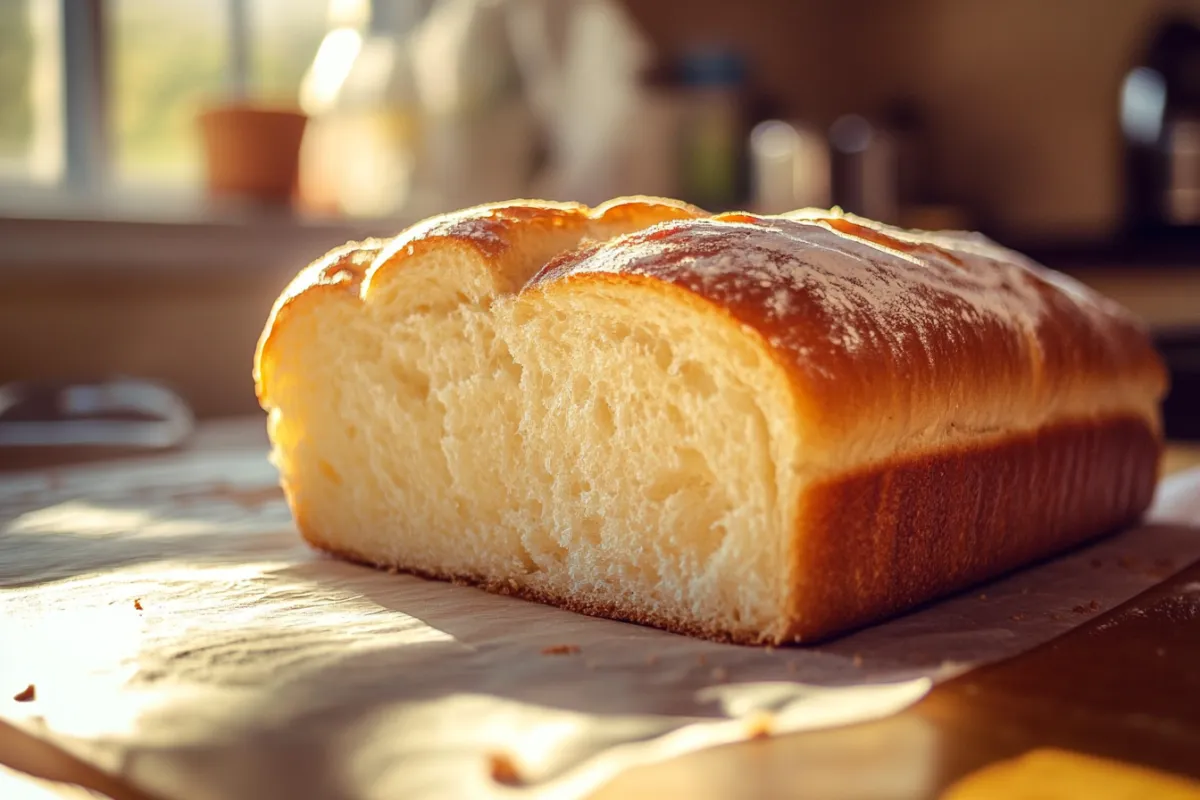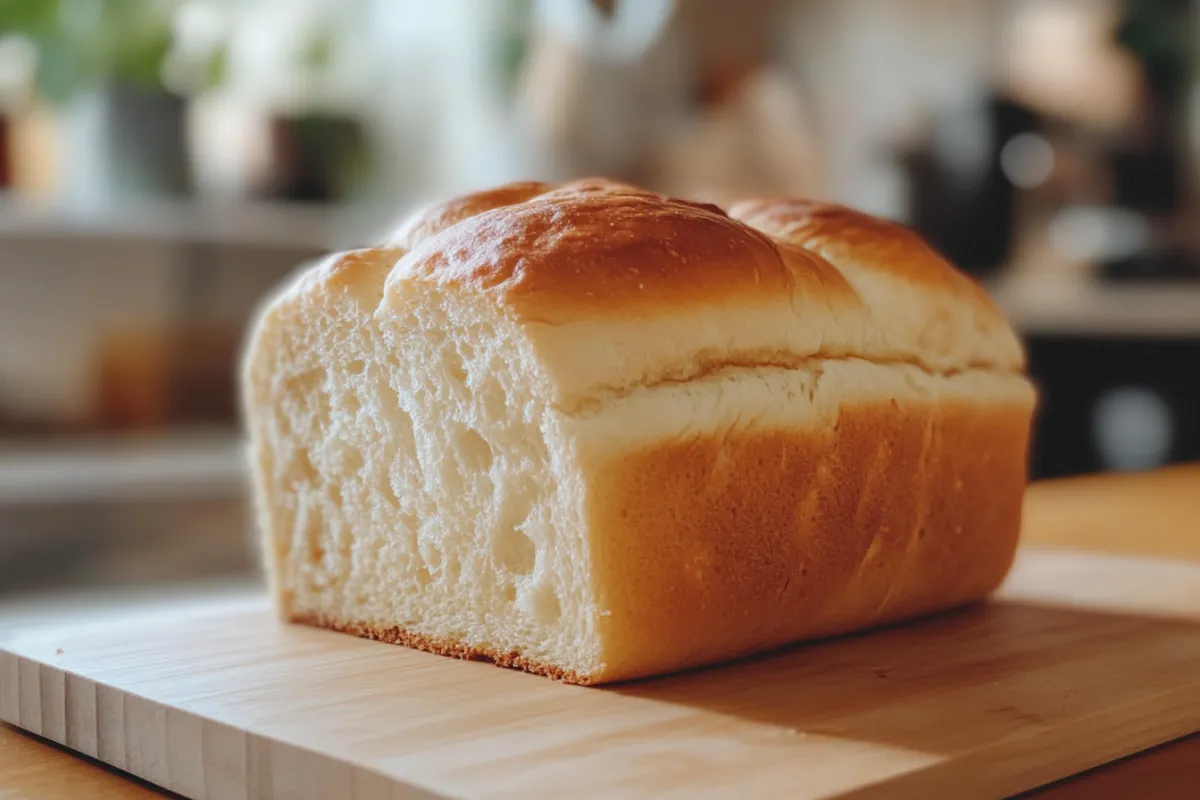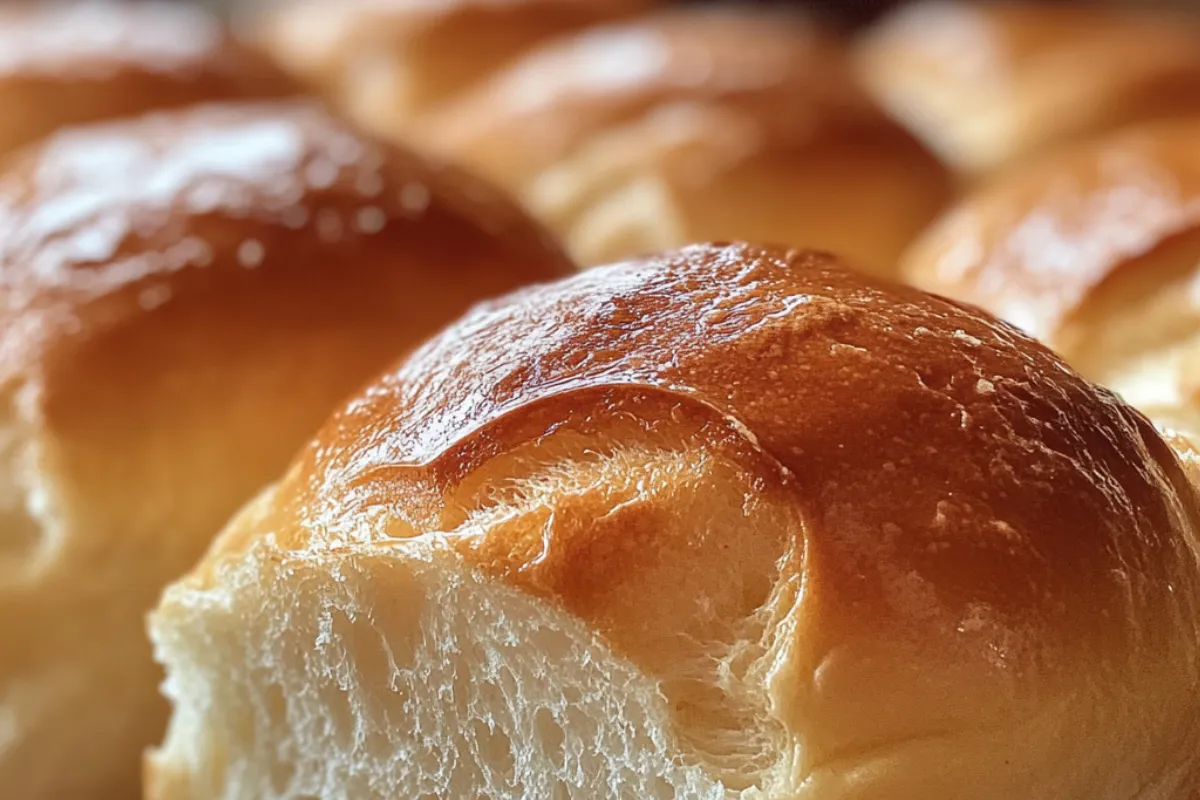
Cottage bread, cherished for generations, stands out among other bread types for its unique characteristics and rich history. But what exactly distinguishes cottage bread from regular white bread or other traditional loaves? In this guide, we will explore every aspect of this bread, from its ingredients and preparation process to its culinary uses and cultural significance.
Table of Contents
Introduction to Cottage Bread
People often celebrate this type of bread for its rustic appeal and distinct shape. Typically, it features a round loaf with a smaller round on top, resembling a flattened bell when cross-sectioned. This classic bread not only appeals for its appearance but also for its crusty exterior and soft crumb. It’s a versatile choice for various culinary applications.
For those who appreciate the art of bread-making, understanding what makes this bread unique can enhance your appreciation of this timeless staple. Whether you’re a seasoned baker or a novice looking to try something new, it offers a rewarding experience. It connects you with traditional baking methods.
Historical Background
The origins of this bread trace back to rural European kitchens. It served as a staple in many households. Historically, families made this bread with simple ingredients available in most homes. Its rustic shape resulted from hand-molding techniques rather than the use of bread pans. Families often baked this bread in communal ovens. There, they gathered to share the warmth and aroma of freshly baked loaves.
Over time, this bread has maintained its traditional appeal. Meanwhile, other types of bread have become more commercialized. Today, many bakers and bread enthusiasts seek to recreate the authentic taste and texture of this loaf.
Ingredients Used in Cottage Bread
One of the primary factors that set this bread apart is the simplicity of its ingredients. Typically, it is made using:
- High-gluten flour or bread flour
- Water
- Yeast
- Salt
These basic ingredients resemble those used in other bread recipes. However, the proportions and methods in the preparation significantly contribute to its unique texture and flavor. If you’re interested in a variation, try this cottage cheese bread recipe, which adds a unique twist to the traditional ingredients.
Importance of Flour
Flour choice is crucial here. High-gluten flour is preferred for its ability to produce a dough with enough elasticity and strength to hold the bread’s shape. The gluten content also contributes to the bread’s soft crumb and chewy texture. These are hallmarks of a well-made loaf.
Role of Yeast and Salt
Yeast and salt play essential roles in the fermentation process. They help the bread rise and develop its flavor. In this type of bread, bakers often employ a slow fermentation process. This allows the dough to rise gradually and develop a richer and more complex flavor than regular white bread.
Preparation and Baking Process
Making this bread is both an art and a science. Unlike commercial bread, which often relies on machines and rapid baking techniques, this one requires a hands-on approach. This approach honors traditional baking practices.
Step-by-Step Guide to Making Cottage Bread
- Mixing the Dough: Combine the flour, water, yeast, and salt in a mixing bowl. Knead the dough until it becomes smooth and elastic.
- First Rise: Let the dough rise in a warm place until it doubles in size. This step is crucial for developing the bread’s texture and flavor.
- Shaping the Loaf: Once the dough has risen, divide it into two portions—a larger one for the bottom and a smaller one for the top. Then, hand-shape the dough into its characteristic round form.
- Second Rise: After shaping, let the dough undergo a second rise, which allows it to expand and develop further.
- Baking: Bake the loaf in a hot oven until the crust turns golden brown and crisp. The high heat is essential for achieving the signature crusty exterior that distinguishes this bread from other loaves.
For those interested in exploring different types of bread and how they compare, this guide on bread types provides a detailed comparison.
Importance of the Baking Process
The baking process for this bread is unique because of its two-step shaping technique. This technique gives the bread its iconic double-decker shape. This method influences not only the bread’s appearance but also its texture. The result is a loaf that is both aesthetically pleasing and delightful to eat.
Shape and Texture of Cottage Bread
The shape and texture of this bread are perhaps its most defining characteristics. The loaf’s round shape, with a smaller round top, is more than just a visual appeal. It’s a result of the specific baking techniques used to create this bread.
How Shape Affects the Baking Process
The unique shape allows for an even distribution of heat during baking. This helps to develop a crisp crust and a soft, tender crumb. The top round, being smaller, bakes more quickly. This creates a contrast between the upper and lower parts of the loaf. This difference in baking time contributes to the bread’s complex texture. The top might be slightly drier while the bottom is more moist.
Texture Differences
Compared to regular white bread, which often has a uniform texture throughout, this bread offers a more varied mouthfeel. The crust is typically thicker and more pronounced, providing a satisfying crunch. Meanwhile, the interior remains soft and chewy. This contrast in textures makes it a favorite for those who enjoy a more substantial and hearty loaf.

Cottage Bread vs. Regular White Bread
When comparing this bread to regular white bread, several differences stand out. These differences make it a unique choice for bakers and consumers alike.
Nutritional Differences
This bread, like many artisan breads, often contains fewer preservatives and additives than commercially produced white bread. The use of high-quality flour and traditional fermentation methods means that it may have a richer nutritional profile, with higher levels of protein and fiber.
Taste and Texture Comparison
In terms of taste, this bread offers a more complex flavor than regular white bread. The slow fermentation process allows the yeast to fully develop, resulting in a loaf with a deeper, more pronounced flavor. The texture, as mentioned earlier, is also more varied, with a thicker crust and a chewier crumb. This makes it a more satisfying choice for sandwiches and toast.
Use Cases: When to Choose Cottage Bread
This bread is an excellent choice for hearty sandwiches. The thick crust can hold up to substantial fillings. It’s also great for toasting, as the crust develops a lovely golden-brown color and the crumb becomes even softer. Additionally, it pairs well with soups and stews. Its rustic texture can soak up broths and sauces without becoming soggy.
Cottage Bread vs. Other Traditional Breads
While this bread shares similarities with other traditional breads, such as sourdough and French bread, it also has unique qualities that set it apart.
Comparison with Sourdough
Sourdough bread is known for its tangy flavor, which results from the natural fermentation process using wild yeast. Cottage bread, on the other hand, has a milder flavor. It uses commercial yeast for leavening. While both breads have a crusty exterior, sourdough tends to have a more open crumb structure. Cottage bread is denser.
Comparison with French Bread
French bread, like baguettes, is characterized by its long, thin shape and crisp crust. Cottage bread, in contrast, is round and more compact. The texture of French bread is also lighter, with a more airy crumb. Meanwhile, cottage bread is known for its substantial bite and dense crumb. Despite these differences, both breads excel in specific applications. French bread is ideal for dipping in sauces, while cottage bread is perfect for hearty sandwiches.
Unique Selling Points of Cottage Bread
This bread’s unique selling points include its rustic appearance, dense texture, and the traditional baking methods used to create it. These qualities make it a favorite among those who appreciate artisan breads and wish to enjoy a loaf crafted with care and attention to detail.
Culinary Uses of Cottage Bread
This bread is versatile and can be used in a variety of culinary applications. Its robust texture and flavor make it an excellent base for numerous dishes.
Popular Ways to Use Cottage Bread
- Sandwiches: The thick crust and soft crumb make it perfect for hearty sandwiches filled with meats, cheeses, and vegetables.
- Toast: When toasted, this bread develops a rich, nutty flavor and a delightful crunch. It’s ideal for breakfast or as a snack.
- Soup Accompaniment: The dense texture makes it a great choice for pairing with soups and stews. It can soak up the flavors without falling apart.
- French Toast: Due to its structure, this bread makes an excellent base for French toast. The bread can absorb the egg mixture without becoming too soggy.
If you’re looking for more ways to enjoy cottage cheese in your recipes, check out these delicious and healthy cottage cheese recipes. They offer a variety of creative options.
Best Pairings with Cottage Bread
This bread pairs well with a variety of foods, including:
- Soups and Stews: The crusty exterior and dense crumb make it ideal for dipping into hearty soups and stews.
- Cheese: The mild flavor complements a wide range of cheeses, from mild cheddar to robust blue cheese.
- Charcuterie: This bread is an excellent accompaniment to charcuterie boards. Its texture and flavor provide a sturdy base for meats and spreads.

Cottage Bread in Different Cultures
Cottage bread, while rooted in European tradition, has found its way into various cultures around the world. Each culture has its interpretation of this classic bread, adding local flavors and techniques to make it their own.
Global Variations
In some cultures, this bread is made with additional ingredients, such as herbs, seeds, or whole grains, to enhance its flavor and nutritional value. In other regions, bakers might shape the bread differently, reflecting local baking traditions and preferences.
Perception and Use in Different Cultures
In many cultures, people see this bread as a comfort food. It connects them to simpler times when bread was made at home and shared with family. Its rustic nature appeals to those who value traditional foods. They appreciate the skill and effort required to make a loaf by hand.
FAQs about Cottage Bread
Here are some common questions people have about this type of bread. The detailed answers will help you better understand this unique loaf.
What is the Difference Between Cottage Bread and Regular White Bread?
This bread differs from regular white bread in its shape, texture, and flavor. While both are made with similar ingredients, this bread undergoes a slower fermentation process and is hand-shaped. This results in a loaf with a crusty exterior and a dense, chewy crumb.
Can Cottage Bread be Made Gluten-Free?
Yes, you can make this bread gluten-free by substituting the high-gluten flour with a suitable gluten-free flour blend. However, the texture will differ from the traditional version. Gluten contributes significantly to the bread’s structure and chewiness.
What Makes Cottage Bread More Flavorful?
The slow fermentation process used in making this bread allows the yeast to fully develop. This results in a deeper, more complex flavor. Additionally, the crusty exterior adds a layer of texture and taste. This enhances the overall eating experience.
How to Store Cottage Bread for Longer Freshness?
To keep this bread fresh, store it in a cool, dry place, ideally in a bread box or wrapped in a cloth. Avoid storing it in plastic, as this can cause the crust to become soft. For longer storage, you can freeze this bread in an airtight bag.
Is Cottage Bread Healthier than Other Bread Types?
This bread can be healthier than some commercially produced bread, especially if made with high-quality flour and without preservatives. Its dense crumb means it is more filling. This can help with portion control.
Conclusion
This bread is a testament to the art of traditional bread-making. Its unique shape, texture, and flavor set it apart from other breads. This makes it a favorite among those who appreciate the craftsmanship involved in creating a loaf by hand. Whether enjoyed as part of a sandwich, toasted with butter, or dipped in soup, this bread offers a versatile and satisfying option for any meal.
If you haven’t tried this bread yet, consider giving it a go. You can either make it yourself or purchase it from a local artisan bakery. With its rich history and distinct characteristics, it is sure to become a beloved addition to your bread repertoire.

